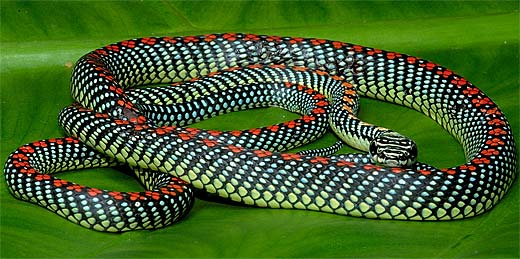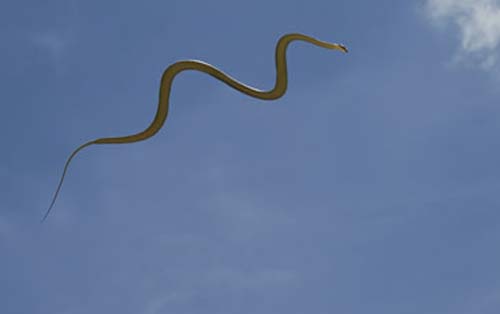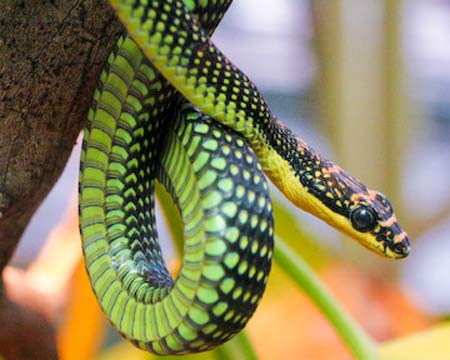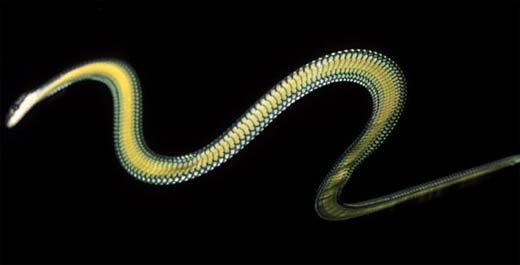Flying Snakes – Sky Diving Reptiles

The thought of “flying snakes” would terrify most people, and it probably should, but since they’re not coming to your neighborhood anytime soon, you might as well appreciate these creatures for how truly amazing they are. They are amazing because, unlike some other gliding animals featured here on factzoo, you might have noticed that snakes have no limbs!, therefore no way to extend any kind of skin membrane for wing-like functionality. Native to the jungles of Southeast and South Asia, the flying snake has achieved the ability to glide through the air by flattening its body into a concave “c-shape” and undulating back and forth to trap air under its body and also turn while falling. It doesn’t really “fly” in the traditional sense of the word, as it can’t gain altitude, but it has control over where it lands, which is more than most of us can say when we fall.
Growing to as long as four feet (1.2 meters), a flying snake takes flight by slithering to the end of a branch, then dangling in a J-shape, then propelling itself out using its lower half. Once in the air, it quickly forms into an “S” before flattening to twice its normal width to catch air. At this point, it engages in one of the most impressive gliding patterns in all of nature, far better than that of the flying squirrel.


There are five documented species of flying snake, which are distributed between western India and Indonesia. They are highly arboreal and rarely leave the tree tops, making it hard to document their daily life in the wild. However, it’s known that they survive off of a diet of rodents, frogs, birds, and bats as any good snake should. They apparently fly to evade predators, move from tree to tree, and to hunt prey; so next time you find yourself in a jungle in Southeast Asia, watch for the skies!


